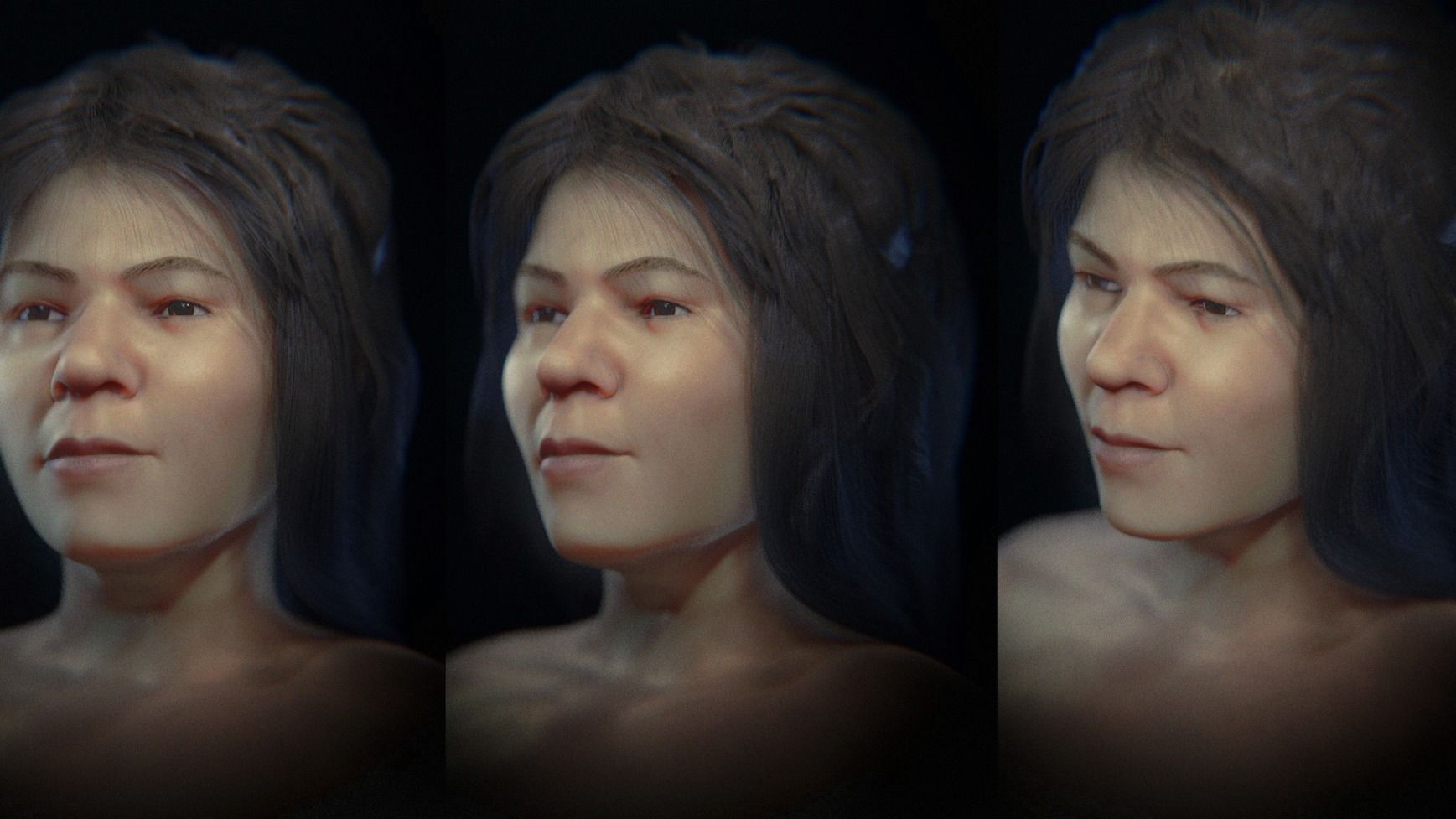See the striking facial reconstruction of a Paleolithic woman who lived 31,000 years ago [View all]
By Jennifer Nalewicki published about 1 hour ago
The remains were previously thought to be male.

An artist's digital approximation of a Stone Age woman seen from multiple angles.
A digital approximation of what the Stone Age woman may have looked like. (Image credit: Cicero Moraes/Jiri Sindelar/Karel Drbal)
In 1881, archaeologists unearthed the skull of a human buried inside a cave in Mladeč, a village in what is now the Czech Republic. At the time, researchers dated the skull to about 31,000 years ago and classified the individual as male.
But they were wrong about the Stone Age person's sex, a new study finds.
Now, more than 140 years later, researchers have corrected that error, revealing that the so-called Mladeč 1 skull belonged to a 17-year-old female who lived during the Aurignacian, part of the Upper Paleolithic period (roughly 43,000 to 26,000 years ago). The team published its findings as part of a new online book called "The Forensic Facial Approach to the Skull Mladeč 1(opens in new tab)" that details how the scientists reclassified the sex of "one of the oldest Homo sapiens found in Europe."
"When the skull was analyzed individually, the features pointed to a male," Cicero Moraes, a Brazilian graphics expert and one of the book's co-authors, told Live Science in an email. "But when later studies compared the skull with others found at the site, the evidence pointed to a female."
More:
https://www.livescience.com/female-skull-facial-reconstruction-czech-republic
